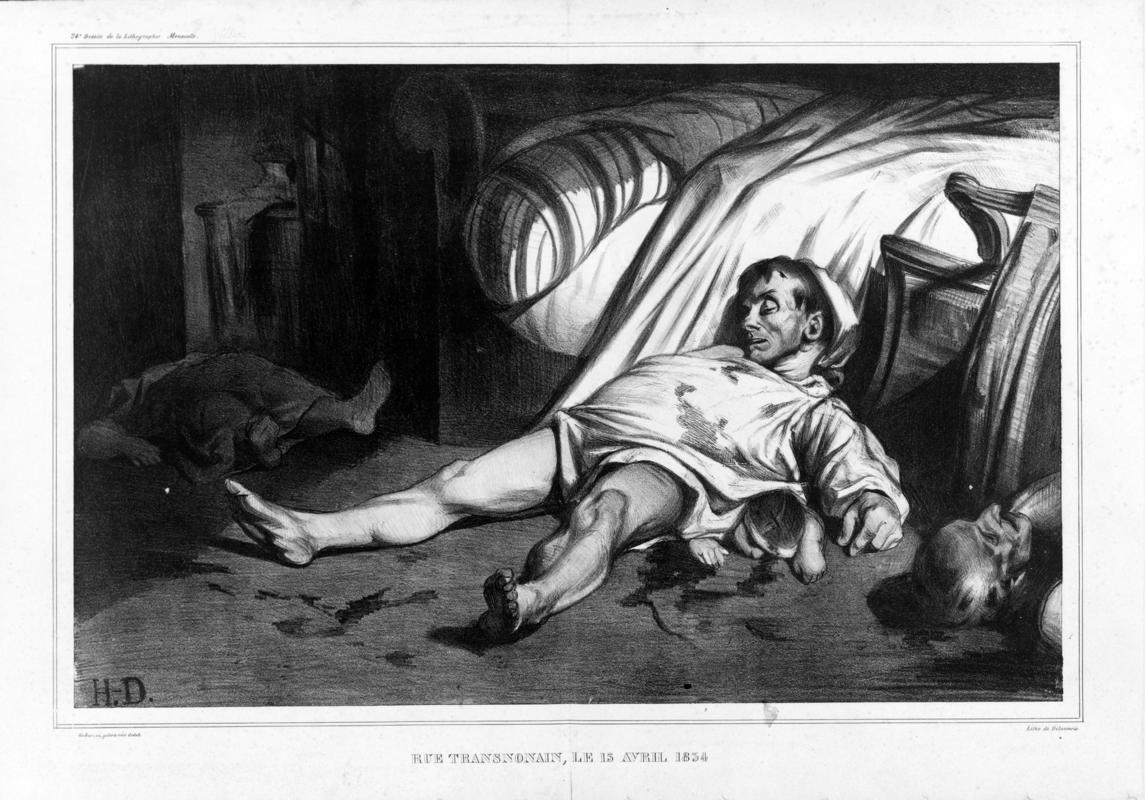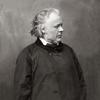More about Rue Transnonain, April 15, 1834

Contributor
Daumier's Rue Transnonain, depicting events from the Riots of April 1834, is not so much a caricature as it is a straight-up condemnation.
l’Association Mensuelle, for which Daumier created this image, was an art subscription. How did it work? People paid the fines that Charles Philipon’s newspapers incurred from the censor’s office and got a print every month in exchange. This fundraising scheme helped support Philipon’s monopolistic empire of political satire journalism, which was thriving in 19th century France.
Daumier was known and even thrown in prison for caricature, but Rue Transnonain is closer to hard reporting on political terror than it is to a humorous cartoon. It depicts the aftermath of an entire family’s murder by police following the violent repression of a proletarian riot in Paris’s St Martin neighborhood. The king didn’t feel all that threatened by cartoons that made him look ugly, but actually showing what brutality looks like IRL took the whole journalism thing a step too far for his tastes. The lithography stone was confiscated as soon as the print was published and every print of the image that was left in the office was destroyed. Anti-caricature specific censorship laws were passed the following year.
That's pretty dramatic censorship, but it’s not like Philipon didn’t see it coming. He and his newspapers were the king’s most vocal and public detractors. Contemporary critics described the artists that worked for l’Association Mensuelle, like Daumier, “M. Philipon’s little army.” A crowd of artists don’t sound like much of a match for the Gendarmes but after Napoleon I, the real army wasn’t all that good at doing their job, and a bunch of drunks armed with pencils actually made for a pretty good fight. Not to mention the hoards of overworked and underpaid laborers ready to take to the streets at any given moment.
Daumier himself wasn’t outwardly very political, but all his friends were, and he kept working for Philipon after his stint in the slammer so he was solidly committed to the democratic cause. During his lifetime Daumier’s work was closely tied to Philipon’s scandalous political persona, but that’s not to say that he wasn’t seen as radical in his own right. A critic said his work was “inspired by a a most sincere hatred.” And as we all know, a good hatred and poverty-fueled grudge is truly timeless.
Sources
- “Censorship in 19th Century France: Caricatures & Censorship.” Great Caricatures, 2010. Accessed May 7, 2018. http://www.greatcaricatures.com/articles_galleries/history/censor_franc…
- Swann Communications. “Notes from the Catalogue: Daumier’s view of a tragedy.” Swann Auction Galleries, September 9, 2013. Accessed May 7, 2018. https://www.swanngalleries.com/news/2013/09/notes-from-the-catalogue-da…
- Kerr, David S. Caricature and French Political Culture, 1830–1848. New York: Oxford University Press, 2000. Accessed May 7, 2018. https://books.google.com/books?id=YXNO_Jc1eb0C&pg=PR11&lpg=PR11&dq=l%27…
- The Trustees of Princeton University. “rue Transnonian, le 15 Avril, 1834, Plate 24 of l'Association mensuelle.” Princeton University Art Museum, 2018. Accessed May 7, 2018. http://artmuseum.princeton.edu/collections/objects/13619











